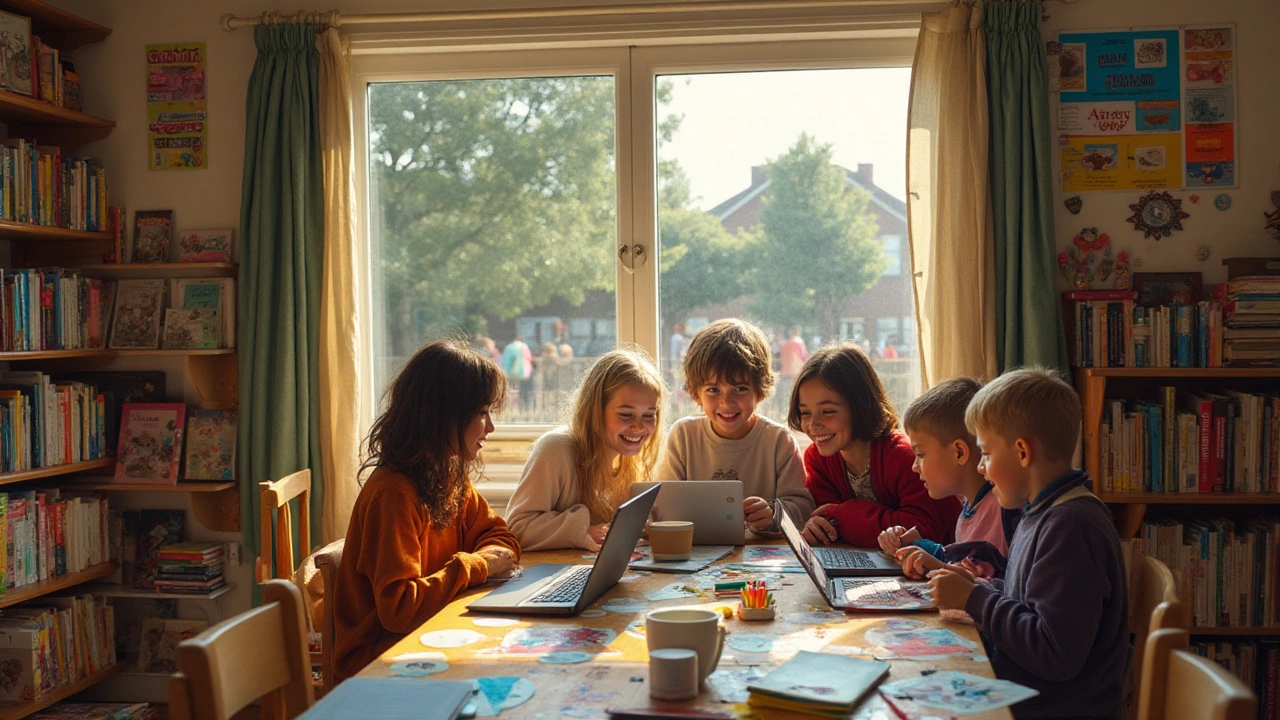Is There a Downside to Homeschooling? Pros, Cons, and Realities of Home Education
Homeschooling offers freedom, but it's not perfect. Explore the real downsides, social challenges, and what families need to consider before diving in.
Read moreThinking about setting up a home classroom? You don’t have to reinvent the wheel. The right books, stationery, and schedule can turn a kitchen table into a place where kids actually want to learn. Below you’ll find practical ideas, must‑have supplies, and quick tips to help you get started without the overwhelm.
First, stock the basics. A sturdy desk or table, an ergonomic chair, and good lighting are non‑negotiable – they keep posture healthy and eyes comfortable. Add a whiteboard or large pad of paper for brainstorming, and you’ve got a flexible thinking space.
Next, think about the subjects. For reading, choose a mix of fiction and non‑fiction that matches your child’s level. Math works best with manipulatives – think counting cubes, fraction strips, or a simple calculator. Science lovers will appreciate a basic lab kit with test tubes, magnifying glass, and safe chemicals for small experiments. Don’t forget art supplies: sketchbooks, colored pencils, water‑based paints, and a decent eraser can spark creativity for hours.
All these items are available at Abbey Gates School Store, and because they’re school‑approved they meet quality standards that regular office stores sometimes miss.
One of the biggest perks of homeschooling is flexibility, but too much freedom can lead to chaos. Start with a loose framework: pick two or three core subjects for the morning when focus is highest, then slot in hands‑on activities or breaks in the afternoon.
For example, a Monday could look like this:
Adjust the times to fit your family’s rhythm. The key is to keep each block short enough to maintain attention but long enough to accomplish a learning goal.
Use a visual schedule on the wall so kids can see what’s coming. When they know the plan, transitions become smoother, and you get more learning time.
Beyond the daily routine, think about social interaction. Join a local homeschool co‑op, attend community events, or set up virtual study groups. Supplies like group activity kits or shared textbooks make these meet‑ups more productive and fun.
Finally, remember to review and adapt. Every week, ask what worked and what didn’t. Maybe the math block needs a shorter sit‑down, or the art time could be extended. Small tweaks keep the system fresh and prevent burnout.
Homeschooling doesn’t have to be a solo mission. With the right resources from Abbey Gates School Store and a simple schedule, you can create a learning environment that feels natural, engaging, and tailored to your child’s needs. Ready to set up your classroom? Start by browsing the home schooling category and pick the tools that match your goals.

Homeschooling offers freedom, but it's not perfect. Explore the real downsides, social challenges, and what families need to consider before diving in.
Read more
Unpacks the real reasons behind home schooling, including its benefits, methods, and latest stats. Explains why more parents choose this path in 2025.
Read more
Wondering when to homeschool your kids? Some ages are easier for parents, while others come with challenges you might not expect. This article digs into the sweetest spots for homeschooling, breaks down the pros and cons at each stage, and offers practical advice for families making the leap. You’ll walk away with real-life examples and tips for every age group. Get ready for honest talk about preschool, elementary, middle school, and those unpredictable teen years.
Read more
Designing a good homeschool schedule can boost productivity and learning outcomes. While flexibility is a huge perk, a routine helps keep everyone on track. This article explores practical tips like setting clear goals, mixing activities, and considering your family’s natural rhythm. Get insights into balancing structure with freedom, and why breaks are just as crucial as lesson time.
Read more
Homeschooling offers a flexible learning environment that can be beneficial for children with ADHD. In this article, we'll explore the potential advantages homeschooling provides, like personalized learning and reduced distractions. We'll also discuss the challenges parents may face and tips to effectively implement homeschooling for children with ADHD. Learn how this educational choice can cater to the unique needs of ADHD students.
Read more
Homeschooling offers a personalized education experience but comes with significant disadvantages. One of the major concerns is the potential lack of socialization opportunities for homeschooled children. This social aspect can impact their ability to collaborate and communicate effectively in diverse environments. Understanding the balance between academic growth and social development is crucial for homeschooling families. Addressing these challenges requires creative strategies and community involvement.
Read more